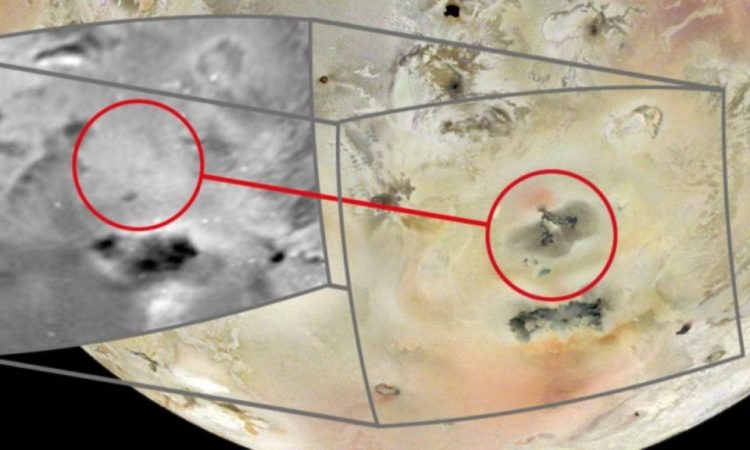
Twenty-five years after NASA’s historic Galileo mission, new close-up images of Io, one of Jupiter’s main moons, reveal the formation of a new volcano.
Twenty-five years after the historic mission, new close-up images of Io, Jupiter’s volcanically active moon, reveal the formation of a new volcano. The images, captured by the JunoCam instrument aboard NASA’s Juno mission, were presented at the Europlanet Science Congress (EPSC) in Berlin. These shots document a vast area of approximately 180 kilometers per side, covered by lava flows and volcanic deposits in a region that was previously intact.
Advertisement
Io is known to be one of the most geologically active celestial bodies in the Solar Systemand its surface is literally dotted with volcanoes. The newly discovered volcanic structure is located just south of Io’s equator, next to a pre-existing volcano called Kanehekili. The images clearly show how the landscape has changed compared to 1997, when the Galileo probe immortalized the same region.
Juno’s images
“Recent JunoCam images show remarkable changes on Io, including this large, complex volcanic structure that appears to have formed out of nowhere since 1997,” said Michael Ravine, project manager at Malin Space Science Systems, the company responsible for its design and operation. of JunoCam for the Juno mission.
The images also show suggestive details of the new volcanic activity. On the eastern side of the volcano, a widespread red spot is visible, probably caused by sulfur expelled into the atmosphere, which subsequently fell back onto the surface. On the western side, two dark lava flows can be observed that extend for over one hundred kilometers. At the end of these flows, intense heat caused the frozen material to evaporate, forming two distinct gray circular deposits.
A moon that continues to amaze scientists
The most detailed image of this new volcanic structure was taken on February 3, 2024, from a distance of 2530 kilometers, with a resolution of 1.7 kilometers per pixel. This is one of about twenty close-up images in visible color, acquired by JunoCam during three flybys between 2023 and 2024, made on the night side of Io, where the only illumination was provided by the reflection of Jupiter’s light.
The discovery of this new volcano not only enriches our knowledge of Io, but once again confirms the incredible geological dynamism, which continues to amaze scientists with its tireless volcanic activity.
Read more

